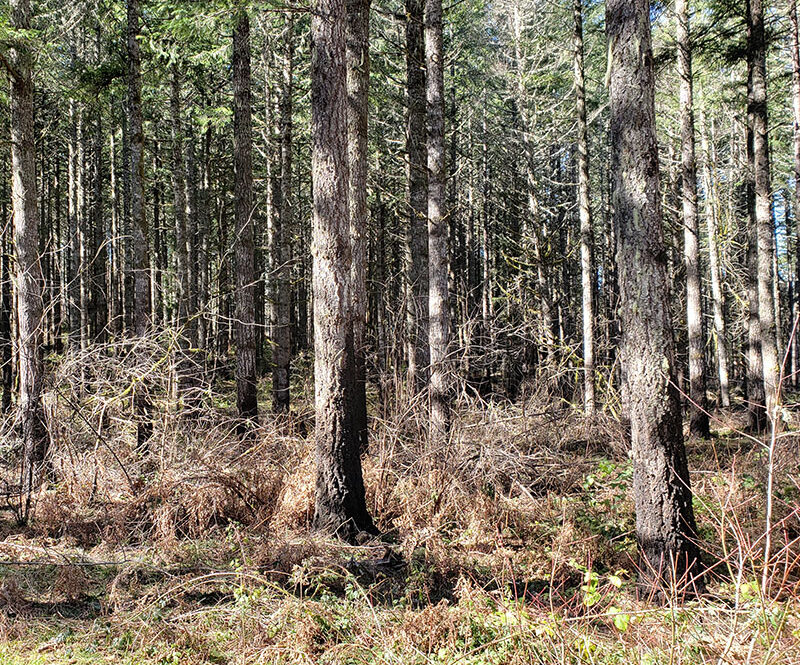Reporter for The Canyon Weekly
A controversial habitat conservation plan (HCP) that is still wending its way through the regulatory process already is the subject of a lawsuit.
Attorney John DiLorenzo, Jr., of Davis Wright Tremaine LLP of Portland, which is representing the Jewell School District in Clatsop County, filed papers March 20 accusing the Oregon Department of Forestry of violations of the 2010 Forest Management Plan for state forests.
The rural Jewell district receives “substantial” funding from timber sales in the Clatsop State Forest, DiLorenzo said in the suit filing. Timber harvesting is expected to drop in the 640,000 acres of Western Oregon state forests that the ODF supervises as a result of the HCP.
The draft HCP was approved March 7 on a 4-3 vote of the Oregon Board of Forestry at a contentious hearing in Salem. The HCP planning process, whose genesis dates to the 1990s, seeks to ensure compliance with the federal endangered species act while implementing a forest management plan for the timber under ODF supervision.
The goal is to preserve forest-dependent species such as coho salmon, the northern spotted owl and the marbled murrelet.
Environmentalists cheered the plan for its preservation goals, while timber interests warned of drastic outcomes for logging communities and a markedly reduced harvest in state forests.
Even before the March 7 vote documents were flying back and forth regarding possible legal action against the plan, which still awaits reviews by the U.S. Fish and Wildlife Service and NOAA Fisheries.
DiLorenzo wrote a March 4 letter to Oregon State Forester Cal Mukumoto in which he said that work the ODF already is doing to implement forest plans in conjunction with the HCP ensures that the process will lead to income losses in the state forests that would be in violation of the law.
DiLorenzo closed by noting that “if the Board ultimately adopts the HCP, we will immediately commence litigation to declare you and your agency in violation of (state rules) and will seek court orders that will either require you to increase harvest levels to satisfy the law’s requirement that your State Forests Division break even or order you to cut your payroll (and eliminate staffing) to levels that reflect your new financial reality.
“We hope that you will reconsider your recommendation and allow my client and other affected local districts to work with you on alternative approaches before we are to the point where we have no alternative but to commence litigation.”
A coalition of environmental groups responded March 5 with a letter to Mukumoto that claims DiLorenzo “misunderstands the nature of the habitat conservation plan.”
“Relevant Oregon law states,” the letter continues, “that the management of state lands can serve a variety of purposes and values and that state agencies enjoy broad flexibility and discretion concerning the management of state lands. Oregon law explicitly contemplates managing state lands for the protection of fish and wildlife habitat.”
DiLorenzo’s legal filing, which was filed in Clatsop County and is seeking an injunction against the ODF, declares that the ODF’s policies run counter to the requirements of the 2010 Northwest forest management plan by failing to generate sufficient revenue “to cover the department’s costs of implementing” the management plan and that the ODF must either increase timber revenues or substantially reduce their budgets.
ODF officials declined to comment on the legal action. Public affairs director Joy Krawczyk told The Canyon Weekly in an email that “the department doesn’t comment on pending litigation.”
HCP and STATE FORESTS
The draft habitat conservation plan covers the 640,000 acres west of the Cascades that are ODF-managed state forestlands.
Overall, the ODF manages a total of about 745,000 acres statewide. All of the forestlands managed by ODF are public lands. The 15 timber counties, which include Marion and Linn, receive about two-thirds of the revenues from harvests on state forestlands. The revenues are distributed to the county in which the harvest takes place.







